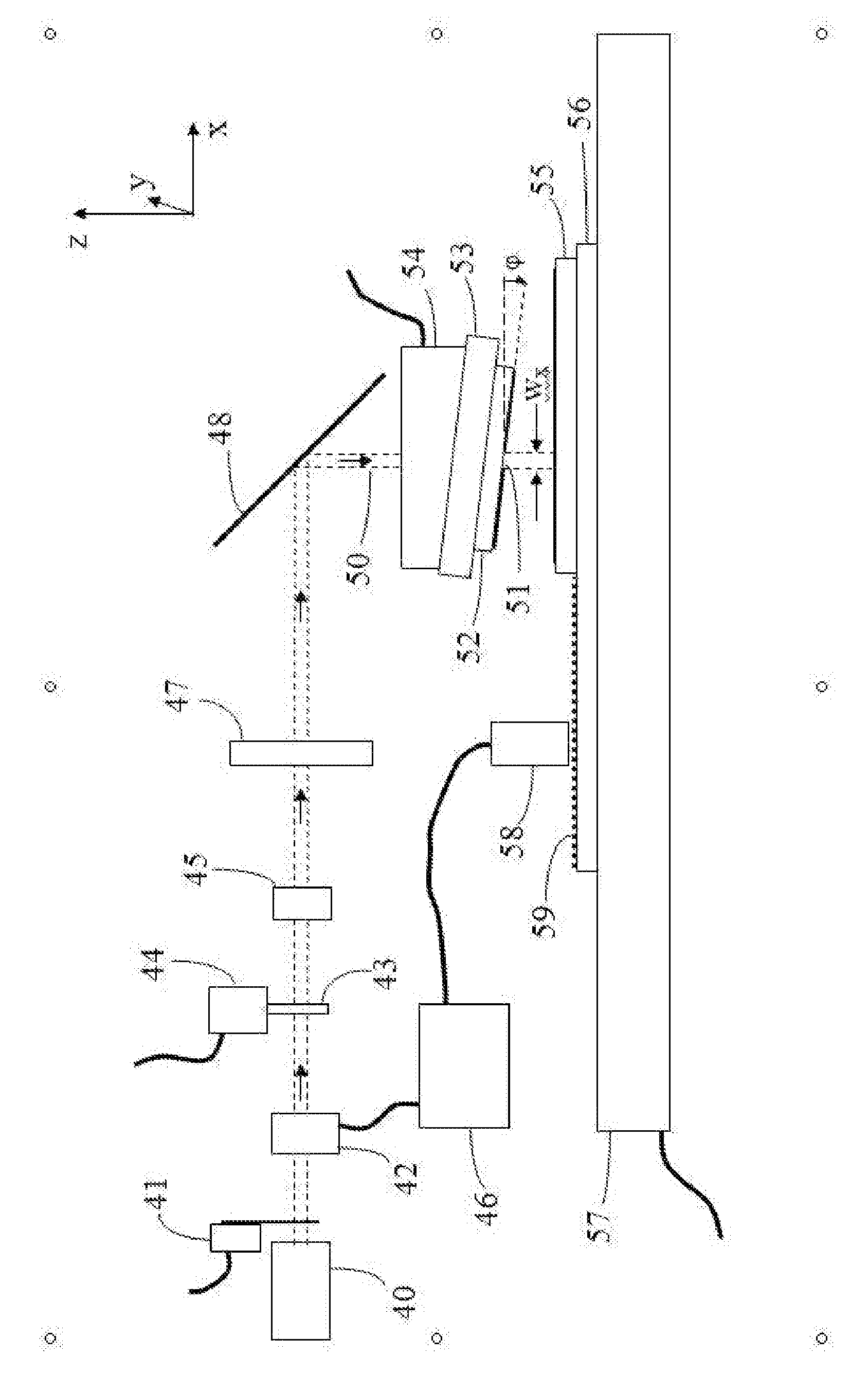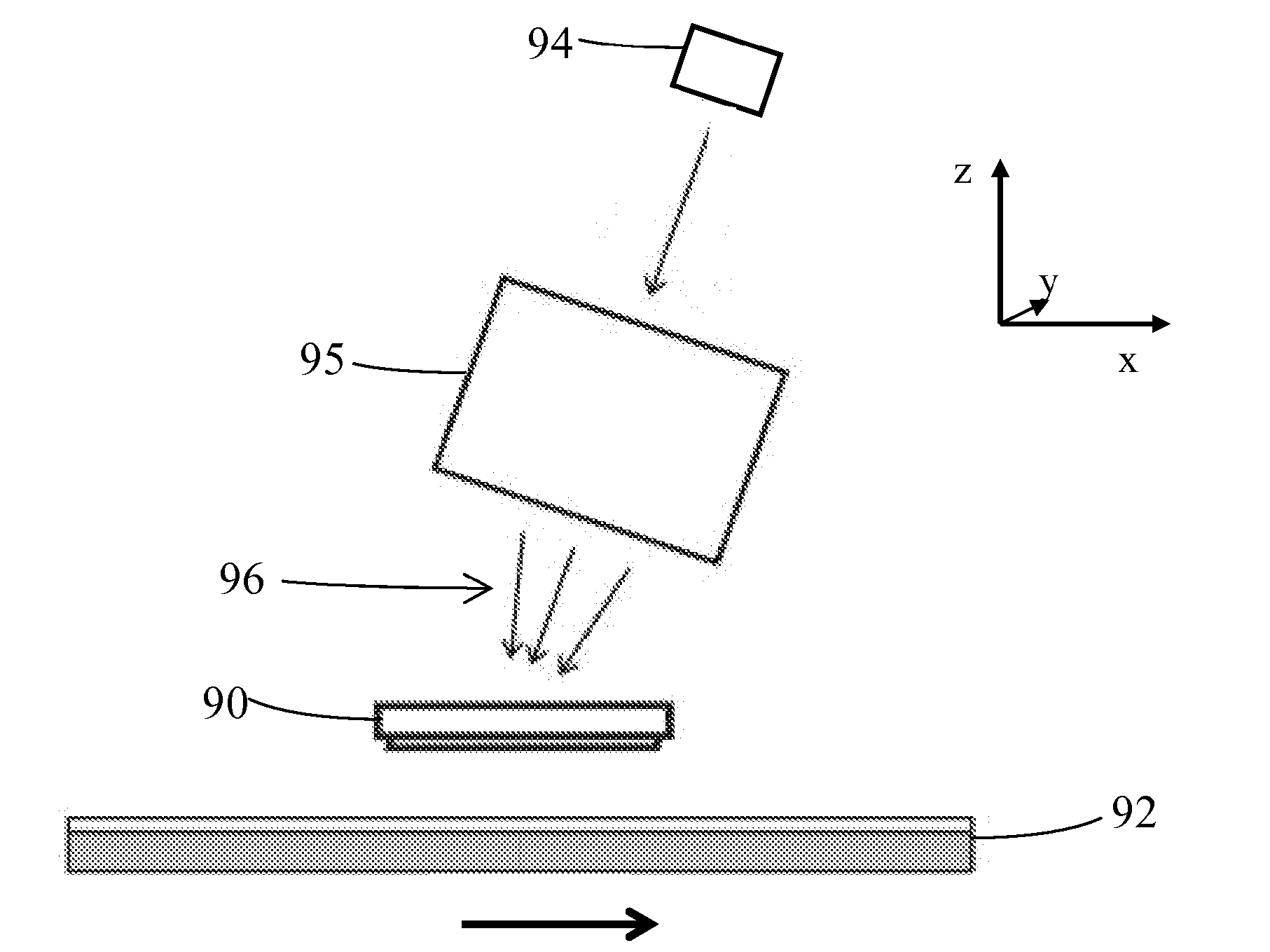System and method for production of nanostructures over large areas
A plane, substrate technology, applied in the field of photolithography for the fabrication of micro or nanostructures, based on the Taber effect or self-imaging
- Summary
- Abstract
- Description
- Claims
- Application Information
AI Technical Summary
Problems solved by technology
Method used
Image
Examples
Embodiment Construction
[0047] In the first embodiment of the present invention, refer to figure 1 , the photomask 9 carries a one-dimensional periodic pattern 10 consisting of alternating opaque lines and transparent spaces with a period of 1 μm. The area of pattern 10 is 2mm * 100mm (l x × l y ), and the lines and spaces of pattern 10 are oriented parallel to the xz plane. The mask 9 is fabricated using standard mask fabrication techniques, the lines of the pattern being formed in a layer of chromium on a transparent substrate. The surface of the mask 9 surrounding the pattern 10 is also covered with chrome. The mask 9 is held by a vacuum chuck 12 having a central aperture allowing illumination of the mask pattern 10 by an exposure beam 11 from above. The mask chuck 12 is mounted to a positioning system 13 that includes an actuator that enables the mask 9 to be moved relative to the size 250 mm x 100 mm (L x × L y ) of the larger photoresist-coated substrate 16, which is positioned on the v...
PUM
 Login to View More
Login to View More Abstract
Description
Claims
Application Information
 Login to View More
Login to View More - R&D
- Intellectual Property
- Life Sciences
- Materials
- Tech Scout
- Unparalleled Data Quality
- Higher Quality Content
- 60% Fewer Hallucinations
Browse by: Latest US Patents, China's latest patents, Technical Efficacy Thesaurus, Application Domain, Technology Topic, Popular Technical Reports.
© 2025 PatSnap. All rights reserved.Legal|Privacy policy|Modern Slavery Act Transparency Statement|Sitemap|About US| Contact US: help@patsnap.com



